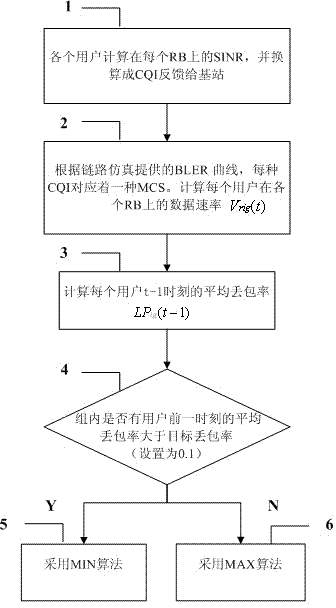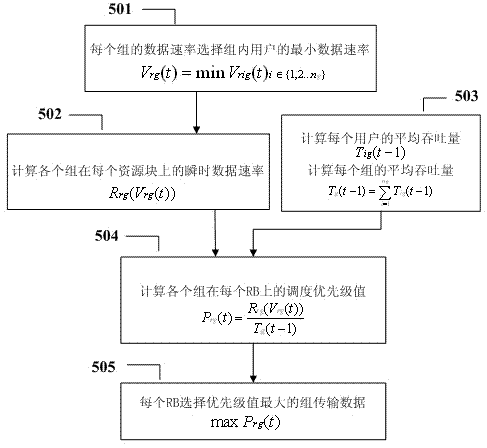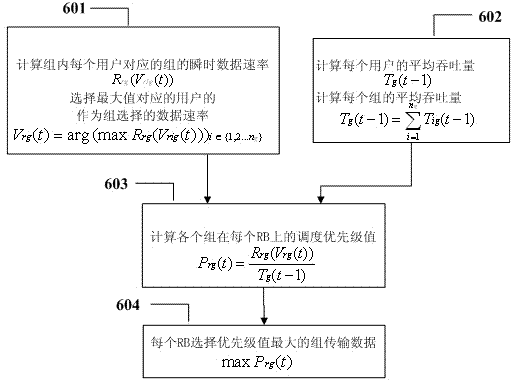Self-adaptive scheduling method of multimedia broadcast multicast service (MBMS) system
A scheduling method and adaptive technology, applied in electrical components, wireless communication, broadcast service distribution, etc., can solve the problem of users not receiving services, and achieve the effect of improving system throughput and achieving multicast gain.
- Summary
- Abstract
- Description
- Claims
- Application Information
AI Technical Summary
Problems solved by technology
Method used
Image
Examples
Embodiment Construction
[0035] The technical scheme of the present invention is described in detail below in conjunction with accompanying drawing:
[0036] The idea of the present invention is to comprehensively consider the system throughput and the fairness of users in the group, by setting the threshold of the average packet loss rate, and combining the MAX and MIN algorithms, an adaptive scheduling (Adaptive intra-group and proportional fairness inter -group, referred to as APF) algorithm.
[0037] For the convenience of public understanding, the following briefly introduces the existing MAX algorithm and MIN algorithm.
[0038] First, some variables involved in the algorithm are defined as follows:
[0039] no g : number of users in group g;
[0040] V rig (t): the data rate of user i belonging to group g on the tth transmission time interval (TTI, Transmission Time Interval) on resource block r;
[0041] V rg (t): the data rate selected by group g at the tth TTI moment on resource block ...
PUM
 Login to View More
Login to View More Abstract
Description
Claims
Application Information
 Login to View More
Login to View More - R&D Engineer
- R&D Manager
- IP Professional
- Industry Leading Data Capabilities
- Powerful AI technology
- Patent DNA Extraction
Browse by: Latest US Patents, China's latest patents, Technical Efficacy Thesaurus, Application Domain, Technology Topic, Popular Technical Reports.
© 2024 PatSnap. All rights reserved.Legal|Privacy policy|Modern Slavery Act Transparency Statement|Sitemap|About US| Contact US: help@patsnap.com










